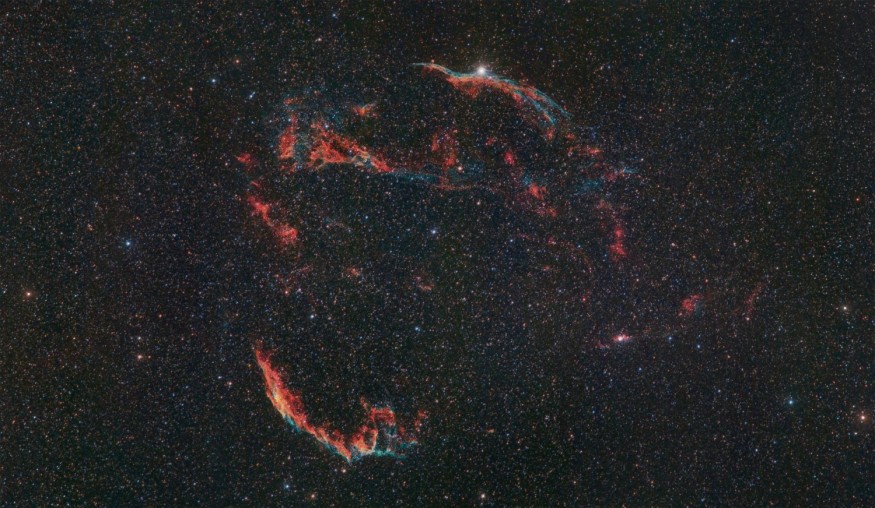Newly published research, titled "Detection of Bosenovae with Quantum Sensors on Earth and in Space," on the arXiv database unveils the possibility of high-energy explosions caused by dying invisible stars known as boson stars. These 'bosenovas' could potentially be detected by scientists.
The paper delves into the fate of boson stars, which are hypothetical massive objects composed of invisible dark matter. When these stars approach the end of their lifecycle, they undergo a tremendous explosion termed "bosenova," comparable to a supernova but imperceptible to the naked eye.

Transparent Stars in Invisible Universe
Dark matter is an enigmatic substance constituting over 85% of the mass in nearly all galaxies, according to Live Science. Today, it remains elusive despite multiple indications of its presence, which mainly rely on its gravitational effects on regular matter. There is still no direct detection of dark matter, which leaves the nature of its particle uncertain.
Previously, the leading hypothesis proposed a heavy dark matter particle, akin to the weight of protons or neutrons. Nonetheless, attempts to observe interactions between heavy dark matter and normal matter have yielded no results. Consequently, researchers have shifted their focus to theories where dark matter is incredibly lightweight.
To illustrate, the neutrino, the lightest known particle, weighs approximately 500,000 times less than an electron. In the most extreme scenarios, lightweight dark matter could be billions of times lighter than a neutrino, leading to unique behavioral patterns.
Rather than moving as discrete particles, such minuscule dark matter would behave like waves, even forming dense clusters referred to as "boson stars" due to being composed of boson particles, as proposed in these models.
As per Phys.org, boson stars arise from a speculative type of dark matter, which constitutes more than 80% of a galaxy's mass and is composed of elusive particles not yet understood by current physics.
Some theories propose dark matter to be comprised of bosons, similar to photons and gluons, particles responsible for carrying fundamental forces. Unlike other particles, these hypothetical dark matter bosons would pervade the universe without emitting radiation.
Due to their unique properties, the bosonic dark matter particles tend to accumulate and form compact, densely-packed structures. These objects exhibit a peculiar behavior, appearing to external observers as black holes, despite lacking any radiation emissions.
READ ALSO : Closest Supernova Ever Observed Could Shine Bright For Months Even When Viewed From Amateur Telescopes
Bosenovas Could Be Happening Undetected in the Universe
According to recent research, the boson star gradually increases in mass as it ages by accumulating more dark matter or merging with other boson stars. Eventually, it reaches a critical point where the gravitational pull overcomes the dark matter's energy, leading to a slow collapse.
During this process, the densely packed dark matter particles collide and annihilate, releasing energy in the form of high-energy, high-velocity particles that jet away from the star. Due to their lightweight nature, these particles would appear as dark matter waves emitted by the dying boson.
The researchers describe a hypothetical event called a "bosenova," analogous to the supernovas of normal stars. In supernovas, massless photons produce waves of light. However, in a bosenova, the emission would be entirely invisible, making detection impossible even if it occurred near our solar system.
More so, ChemEurope.com reports that during the experiment that detected the bosenova, the boson star experienced implosion and contraction beyond detection, followed by an explosion. Surprisingly, around half of the atoms appeared to vanish completely, as they remained undetected in both the cold particle remnants and the expanding gas cloud formed during the explosion.
Bosenova explosions may be detected by ultralight dark matter detectors worldwide, appearing as surges of dark matter from a specific direction in the sky, similar to traditional supernovas' light surges.
RELATED ARTICLE:
Dark Exoplanets: Scientists Claim There Could Be Planets Made of Dark Matter Orbiting Stars
Check out more news and information on Space in Science Times.
© 2025 ScienceTimes.com All rights reserved. Do not reproduce without permission. The window to the world of Science Times.










